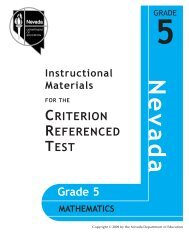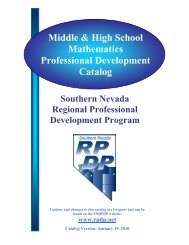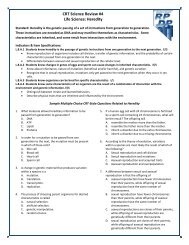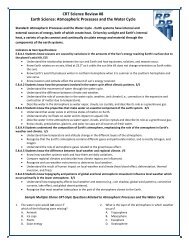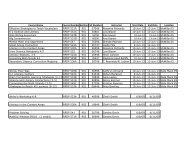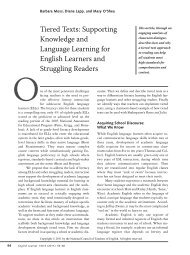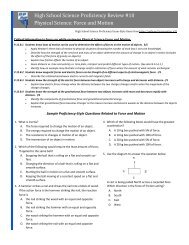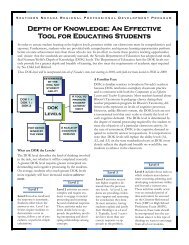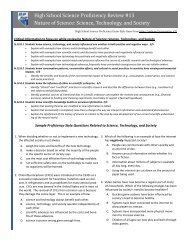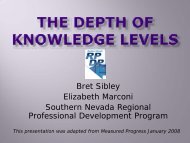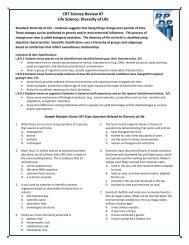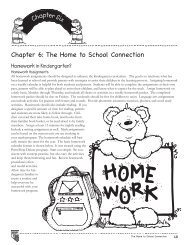Science Achievement Indicators Grade 6-8 - RPDP
Science Achievement Indicators Grade 6-8 - RPDP
Science Achievement Indicators Grade 6-8 - RPDP
Create successful ePaper yourself
Turn your PDF publications into a flip-book with our unique Google optimized e-Paper software.
<strong>Achievement</strong> <strong>Indicators</strong> for <strong>Science</strong><br />
<strong>Grade</strong>s 6-8<br />
Content Standard<br />
P.8.C.4 Students know energy<br />
cannot be created or destroyed,<br />
in a chemical or physical<br />
reaction, but only changed from<br />
one form to another.<br />
Work at the Emergent/<br />
Developing level may<br />
indicate...<br />
Content Standard P8C (continued)<br />
Students understand transfer of energy.<br />
Work at the Approaches level<br />
may indicate ability to…<br />
name different types of energy.<br />
(P.8.C.4)<br />
Work at the Meets level<br />
demonstrates ability to…<br />
explain that one form of energy<br />
can be changed into another<br />
form of energy. (P.8.C.4)<br />
Work at the Exceeds level<br />
demonstrates ability to…<br />
P.8.C.5 Students know heat<br />
energy flows from warmer<br />
materials or regions to cooler<br />
ones through conduction,<br />
convection, and radiation.<br />
recognition that hot objects<br />
cool, and cool objects warm.<br />
(P.8.C 5)<br />
identify examples where heat is<br />
produced as a byproduct of<br />
energy conversion from one<br />
form to another. (P.8.C.4,<br />
P.8.C.5)<br />
describe conduction,<br />
convection, and radiation in<br />
terms of heat transfer using<br />
examples. (P.8.C.5)<br />
describe the relationship<br />
between heat and temperature<br />
(P.8.C.5)<br />
describe examples of heat<br />
moving from one object to<br />
another by conduction,<br />
convection and radiation.<br />
P.8.C.5<br />
P.8.C.6 Students know<br />
electrical circuits provide a<br />
means of transferring electrical<br />
energy to produce heat, light,<br />
sound, and chemical changes.<br />
recognition that some materials<br />
allow electricity to be<br />
transferred more easily than<br />
other. (P.8.C.6)<br />
draw/label or construct a simple<br />
electrical circuit containing a<br />
battery or generator, wire, an<br />
electrical load (e.g., bulb), and a<br />
complete loop through which<br />
the electrical current can pass.<br />
(P.8.C.6)<br />
demonstrate that electricity can<br />
be used to produce heat, light,<br />
sound, motion, and chemical<br />
changes. (P.8.C.6)<br />
demonstrate the use of an<br />
electrical circuit. (P.8.C.6)<br />
describe the generation and<br />
conduction of electricity.<br />
(P.8.C.6)<br />
explain the difference between<br />
parallel and series circuits.<br />
(P.8.C.6)<br />
August 2007 10



